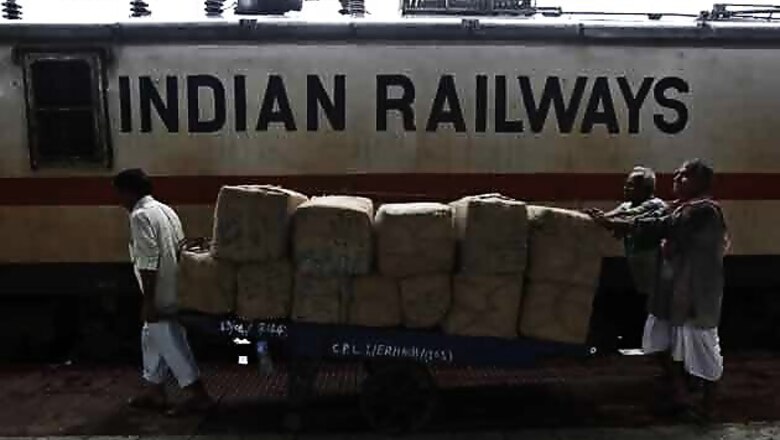
views
New Delhi: The world's largest passenger carrier (23 million a day), fourth-largest freight carrier (1 billion tonne a year) that operates 19,000 trains daily covering a 65,000 kilometres of route length, the Indian Railways truly is a story of scale.
However, another story that has run alongside and grew every passing year is the one of stagnation, thanks to the perennial dilemma of whether it should operate as a commercial enterprise or serve as a welfare organization.
The table below charts the railways' financials over the past seven years. Railways has managed to just about meet its expenses and create some bit of surpluses, as can be seen in the gross receipts and working expense figures.

But the surplus, a few thousand crores every year, is a drop in the bucket compared to the capital required for railways to meet their expansion projects. For ongoing projects alone, capital worth Rs 1.57 lakh crore needs to be infused.
The story lies in failures of two kinds. One, over the years, governments have been extremely hesitant in hiking fares for passenger, while choosing to increase rates of freight, to the point that the latter has been subsidizing the former for a long time. For instance, the average rate charged by railways to a passenger for a kilometre's distance went up from 24.5 paise in 2003-04 to 27 in 2010-11. Over the same period, the average rate to carry a tonne of freight a kilometer has increased from 71.88 paise to 101.47.
As a result, while the passenger division has been consistently making losses (it accounts for roughly half the railways expenses and brings in less than one-third its revenues), ever-increasing freight rates have only resulted in companies increasingly deciding to transport freight by road. The market share for freight has come off from 90 percent in the 1950s to about 42 percent now.
The only conceivable way for railways to upgrade systems, boost cleanliness, improve safety mechanisms and provide more comfortable travel while expanding its capacities is to invite private capital. In the last railway budget, the government allowed 100 percent foreign direct investment in several sectors aside of transportation. So also, it focused on trying to revive the public-private partnership (PPP) model, which has till now failed to take off in any meaningful way because earlier railways would hardly leave any incentive for the private sector to come in.
So when Suresh Prabhu gets down to read the railway budget speech on Thursday, beyond the routine announcements of new trains and newer projects, analysts will look for the big ticket ideas on how railways can raise the funds it badly needs. While there are expectations passenger fares or freight rates may not be touched - the increase last year just prior to the rail budget resulted in a furore - Prabhu should outline ways in which the government's push last year has yielded results.
Ways to bring in more local and foreign capital, monetize assets, cut costs, promote more indigenous manufacturing, improve access to low-cost funding, boost governance by overhauling IT infrastructure as well as forming an independent authority to decide on rail tariffs would be key on observers' minds.














Comments
0 comment